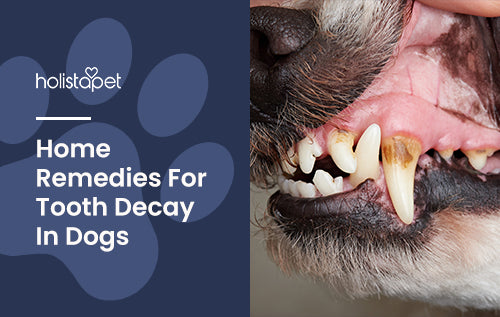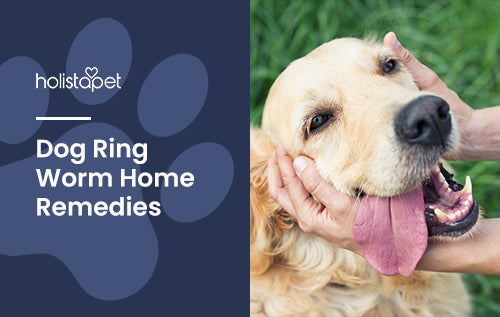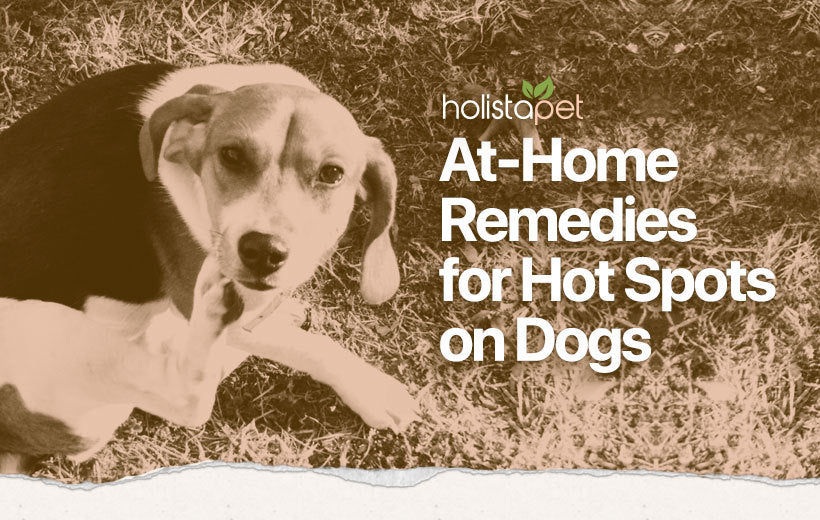The average human wakes up in the morning and brushes their teeth. The same can be said for bedtime: the average human cleans their teeth before bed. This habit was instilled in us from a young age.
Still, with this knowledge of tooth care, many pet owners still neglect to keep up with their dog's oral health. Neglect may lead to gum disease, but luckily for dogs with tooth decay, there are some clever home remedies to combat the problem.
Just like us, our dogs should have their teeth brushed daily. Chew toys also help promote good oral health because it forces pups to gnaw away at an object that can help diminish plaque.
There are many facets to oral health, which we will explore in-depth below.
What Is Dog Tooth Decay?
Tooth decay in humans is the elimination of your enamel or the hard outer layer of your teeth by bacteria. Tooth decay is common in humans but much less common in dogs.
First, let's define some of the terms important when discussing the health of teeth.
- Plaque: Plaque is a sticky film of bacteria that forms over the tooth – it develops quickly and allows bacteria to multiply close to the surface of the tooth.
- Calculus or tartar: if plaque is not removed, it becomes calcified – producing a hard layer over the tooth.
- Gingivitis: simply means inflamed gums. The affected soft tissues around the teeth appear red, and might bleed. If plaque and calculus are present, the bacteria they harbor rapidly cause gingivitis.
- Periodontitis, or periodontal disease: occurs when inflammation in the gums spreads to the tissues that anchor the tooth into the jaw and causes loosening and loss of teeth. This inflammation can spread to cause damage to, and even fracture (breaking), of the jaw bone itself.
Tooth decay is much more common in humans. According to Veterinary Centers of America, tooth decay represents less than 10% of all dental problems in canines.
The most common dental dilemma seen in dogs is periodontal disease, followed by fractured teeth. This is because of plaque. Plaque constantly forms on teeth, mostly right after eating.
The sticky film created by the bacteria in plaque coats teeth. "The bacteria in plaque does a lot of things, but one thing it does both in pets and humans is to cause our immune system to recognize it as foreign," states Brett Beckman DVM, who is a veterinary dentist in Florida and Georgia.
Since a dog’s body recognizes plaque as foreign, as a defense mechanism, it will send white blood cells to combat the issue. Unfortunately, when white blood cells attack the bacteria, they do so by releasing substances that not only kill bacteria but also damage the dog’s tissues.
In addition, the bacteria also release acid and enzymes that break down tissue. This results in inflamed gums, damaged tissue, and loss of teeth.
Where is Tooth Decay More Common?
Tooth decay is much more common in humans. According to Veterinary Centers of America, tooth decay represents less than 10% of all dental problems in canines. The most common dental dilemma seen in dogs is periodontal disease, followed by fractured teeth.
More than 80% of dogs over the age of three have active dental disease, making it the most common ailment in dogs by far. However, dogs rarely show noticeable signs of dental disease, so owners must stay ever vigilant.
Causes of Tooth Decay in Dogs
Although brushing your pet’s teeth is fairly easy, most owners do not brush their dog’s teeth daily. This is the number one reason for plaque and tartar build-up.
Your dog’s diet is also a major factor when it comes to oral health. Dogs that are fed a natural diet ordinarily have good oral health. A healthy diet includes raw meaty bones, chewy muscle meat, and recreational bones.
Your pup’s mouth is a very dirty place. Indeed, anyone’s mouth is a very dirty place! Think about all the things you have seen go into your dog’s mouth over time.
Bacteria can grow after it interacts with food, chew toys, or almost anything that goes into your pup’s mouth. As bacteria multiply on the surface of teeth, it forms plaque.
Plaque can be removed naturally by your pup’s tongue and chewing habits, but that is not enough to fully eliminate it.
Over time, unabated plaque will become mineralized, which creates tartar. How quickly plaque mineralizes differs in various breeds. Yes, some dog breeds are more healthy than others when it comes to their mouths and teeth.
Much like in humans, tartar can accumulate below and above the gum line. If the tartar builds up too heavily, that is when conditions like gingivitis and periodontal disease start to form.
When ignored, periodontal disease can spread deep into the tooth cavity, damaging the bone. The degraded tooth will then become loose and may fall out.

Symptoms
According to WebMD, symptoms of severe gum disease and tooth decay include:
- "Talking" or making noises when a dog eats or yawns
- Bleeding or red gums
- Bloody or ropey saliva
- Blood in the water bowl or on chew toys
- Loose teeth
- Bad breath (halitosis)
- Sneezing or nasal discharge - this can happen when an abscess forms in the upper jaw and spreads up to affect the nose or sinuses. The face might also be swollen.
- Bumps or lumps in the mouth
- Avoidance of head being touched
- Chewing on one side of the mouth
Left unchecked, pups with gum inflammation may have a higher risk for heart, kidney, and liver disease. To make matters worse, untreated gum disease can also destroy bones so badly that even a little pressure will fracture a small dog's vulnerable jaw.
According to the World Small Animal Veterinary Association (WSAVA), periodontal disease is linked to cardiopulmonary diseases like endocarditis. Endocarditis is a bacterial infection of the lining of the heart, and it can cause severe damage to the heart valves.
The chance of endocarditis is approximately six times greater in pups with moderate to severe periodontal disease than for dogs without it, states the WSAVA report.
Bacteria from teeth can also spread into the bloodstream, leading to health issues elsewhere in the body.
"Infections in and around the teeth do cause increases in inflammatory mediators and can cause bacteremia (a state in which bacteria appears in the blood), which likely does cause damage to distant parts of the body or distant infections,” emphasizes Dr. Chad Lothamer, DVM, DAVDC.
Preventing Plaque & Tartar Build-Up
 Routine Brushing
Routine Brushing
The best way to prevent dog tooth decay is to simply brush your pup’s teeth every day. Owners can purchase special toothpaste that can be swallowed, making it easy to go in and clean up your dog’s mouth.
Although it may seem like a difficult task at first, most dogs adjust to daily teeth cleaning quickly. In fact, many dogs really enjoy the specially flavored toothpaste and the one-on-one time they spend with their owner while getting their teeth brushed.
Oral Check-Ups
Owners should also take their pets in for regular oral exams and cleanings. Getting an x-ray, much like humans do is the only way to see everything that is going on in your pup's mouth.
Your vet is experienced in treating periodontal disease because it is a very common problem. They will be able to advise you on when x-rays and full dog teeth cleaning are needed.
Dietary Health
Other than daily cleaning, diet is the most important prevention tactic for tooth decay. Would you feed humans sugary food all day without ever brushing their teeth? Probably not. Feed your pup quality dog food. There are special dog foods that promote good oral health, and other ones that actually aid in removing plaque.
Water Additives
Using water additives for teeth cleaning is also recommended. Owners should speak with their vet before changing dog foods or adding additives to their pup's water.
Beneficial Chew Toys
Chewing toys offer the perfect remedy for dog tooth decay. Chewing helps to prevent gum disease in pups. Treats that aren't extremely hard, such as rubber toys, thin rawhide, and stuffed animals will help your pup get rid of unwanted plaque building up in their mouth.
If your pup is already experiencing some tooth decay, try to avoid hard toys such as animal bones and hooves, nylon and hard plastic toys, and tug of war toys. They may cause your pup's teeth to pull and fall out if they are already damaged.
Beneficial Chew Treats
There are different pet brands that manufacture dental chew treats for pets. These products provide your dog with a treat as well as a way to prevent tooth decay.
In fact, several different dental chew brands have done careful trials that demonstrated a reduction in plaque, calculus, and breath odor. For example, the leading dental chew brand GREENIES performed an independent test to prove the efficiency of their chews.
The results concluded that one dental chew a day resulted in "60% less tartar accumulation, 33% less plaque accumulation, 80% healthier gums, and 45% improvement in oral malodor (halitosis)." The test lasted 28 days and during this time all dogs ate the same dry food diet.
 Home Remedies for Dog Tooth Decay
Home Remedies for Dog Tooth Decay
Home remedies for dog tooth decay are known to work for mild cases. If your pup has a severe case of gum disease, you should go to the vet immediately.
Chlorhexidine Rinses
These have been known to help fight gingivitis in pups. It is an antiseptic that is available in most pet stores. Doctors have been known to use it to sterilize surgical instruments. Chlorhexidine binds to oral tissues and tooth surfaces and then gets released into the oral cavity.
Your pup may enjoy eating some nasty-looking things, but for some reason, the taste of Chlorhexidine is repugnant to pets. It may also cause tooth staining. Owners can purchase a .2% rinse and spray a tiny amount on the inside of your dog's cheeks 1-2 times a day.
Aloe Vera & Peroxide
The combination of aloe vera and peroxide can work wonders for oral health, but owners should be cautious. Aloe vera can lead to vomiting and other stomach issues in dogs. Hydrogen peroxide is an antibacterial and antiseptic component that can fight plaque. To be safe, owners should use it very sparingly.
You can mix aloe vera gel (in an amount the size of your pinky nail) with 3% hydrogen peroxide and apply it to a cotton swab. Rub the mix onto your pup's teeth.
The best time to apply this mix is at night when your dog is finished eating for the day. Owners should repeat this method for 1-2 weeks to remove heavy plaque build-up.
Stomadhex
Stomadhex is also an antiseptic that can be a home remedy for dog tooth decay. It comes in the form of a patch that sticks inside your pup’s upper lip and stays there for 10 days.
The patch releases chlorohexidine and nicotinamide. Stomadhex is usually prescribed by your veterinarian after a dental cleaning and is known to prevent plaque build-up, tartar, and bad breath.
Conclusion : How To Prevent Future Tooth Decay In Dogs
Responsible owners will keep up with their pup's oral health. That means daily tooth cleaning, providing efficient and effective treats, and monitoring their pet's gums and teeth. Just like with humans, it wouldn't hurt to bring your pet for regular dental check-ups as well.
Diet is also key to promoting great oral health. Some vets recommend staying away from kibble. Studies have proven that kibble, which is high in carbs and plant protein, can lead to oral and other health issues.
Providing your pup with raw food is much healthier (Muscle meat, organ meats, whole or ground bone, raw eggs, dog-safe fresh fruits and vegetables, and some dairy such as yogurt are all considered healthy raw foods). However, a raw food diet does require careful planning to ensure that the correct nutrients are provided in a safe manner.
By keeping up with your dog’s oral health, owners should be able to avoid tooth decay altogether. Stick around and learn more dog home remedies or check out Holistapet!
Read Next: What Can I Give My Dog for Tooth Pain Relief? [Addressing Dental Issues]





































Leave a comment
This site is protected by reCAPTCHA and the Google Privacy Policy and Terms of Service apply.